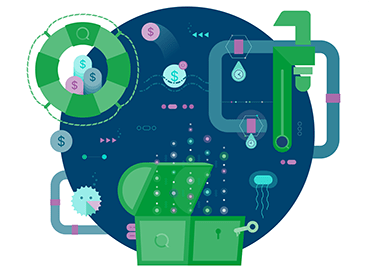What was once the exclusive realm of developers and coders is now a place where almost everyone can play. As Transbank proved, no-code and low-code data platforms make AI available to anyone in your organization who works with data, from chief data scientists to junior employees. Intuitive interfaces give users a simple, visual approach to building data workflows. With a simple UX, you can connect your data, clean it up, and send it where it needs to go in just a few clicks.
Thanks to OpenAI’s ChatGPT, most people are familiar with generative AI tools by now. But in work environments, what can be accomplished by simply crafting a smart prompt is astonishing. Throughout the data journey, AI is doing the heavy lifting for things like pipeline design, script generation, and insight generation. It can also make your people more productive by streamlining complex tasks that require manual effort and technical knowledge, effectively taking a wrecking ball to the advanced analytics skill barrier.
This new, streamlined approach to analytics lets teams work faster, launch products sooner, target customers more accurately, fine-tune strategies on the fly, and even simplify data management through automation. Overall, it creates a mutual give-and-take where AI makes insights more accessible, simple, and useful, all without you needing to be an AI expert.
Before we close this Part on productivity, we would be remiss not to talk about the new kid on the block, agentic AI. Agentic AI is your best friend for eliminating barriers to AI adoption. It takes GenAI to another level, handling time-consuming, multi-step processes of collecting, cleaning, and analyzing data (i.e., the stuff that traditional automation struggles with). It can read text data, such as sentiment analysis, and generate reports in plain language. It even saves people from having to wait on a data specialist or programmer to generate insights.
And since agentic AI is more autonomous, it frees up your people to focus on more strategic and creative work.
Gen AI is very important, but agentic AI is beyond that. Every organization can unlock exponential growth; You unlock a different pace of agility and innovation.
Ritu Jyoti
Group VP/General Manager | IDC











